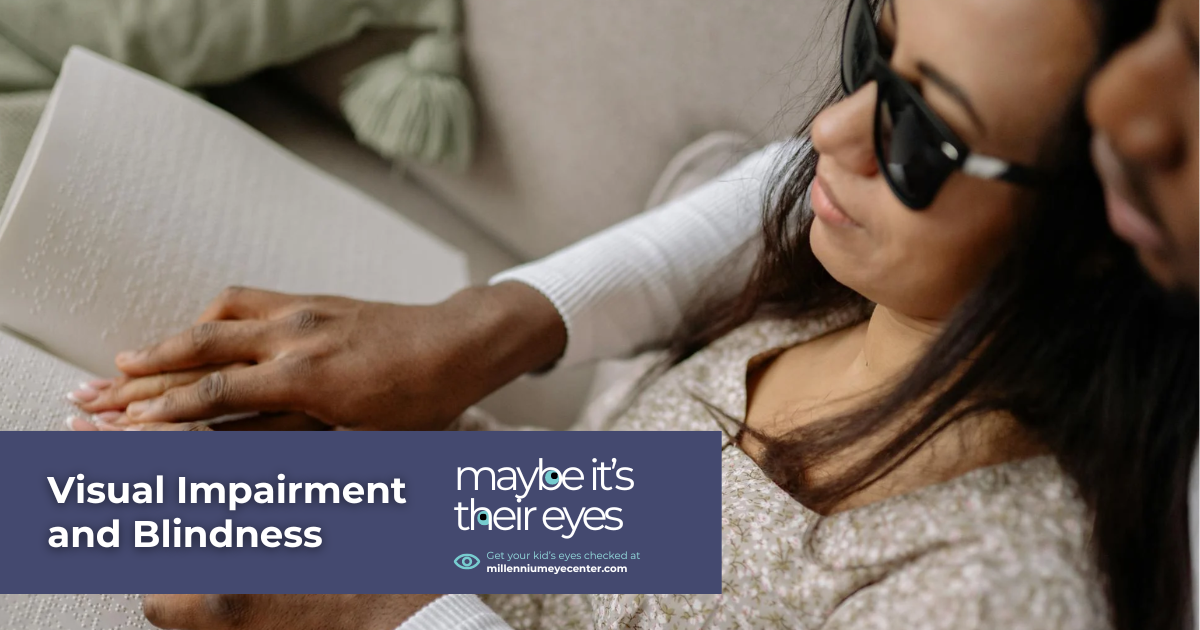Contact lenses and glasses can only correct vision problems to a point.
Someone who can’t see clearly with even the strongest corrective lenses is considered to be on the spectrum of visual impairment. It’s good for everyone to have an idea of this spectrum, no matter how good their eyesight is — even if a person isn’t visually impaired themselves, they may have an opportunity to assist someone who is, and there are right and wrong ways to do it.
Causes of Visual Impairment
Many things can cause visual impairment, from genetic disorders to birth defects to diseases. Old age and eye injuries can also impair vision, which is why it’s so important to wear protective gear like goggles to minimize eye injuries or sunglasses to minimize UV damage. We should also maintain good habits like staying active, eating well, and avoiding smoking to keep our eyes as healthy as possible. Surgery can address some eye problems but others are neither treatable nor avoidable.
The Types of Visual Impairment
Each person experiences visual impairment differently, and some of that is down to the variety of causes. Glaucoma affects the peripheral vision first, while macular degeneration erodes the central vision. Other problems include visual distortion, visual perception difficulties, diplopia (double vision), and photophobia (sensitivity to light).
What Do “Low Vision” and “Legally Blind” Mean?
If your eyesight can only be corrected to 20/70 at best (meaning you could only see as much detail at 20 feet away as most people could see from 70), that marks the threshold of “low vision.” Legal blindness begins when glasses or contacts can only get someone to a visual acuity of 20/200.
Blindness Doesn’t Always Look the Same
Some blind people are born without sight while others lose their sight after being able to see. Blindness can come on suddenly or over many years. Being blind can include the ability to distinguish between light and darkness or it can be the complete absence of visual stimulation. Some forms of blindness are obvious to other people, but others don’t affect the appearance of the eyes at all.
How to Offer Assistance the Right Way
Everyone deserves to be treated with respect and dignity. It is generally considered rude to make a big fuss about someone’s disability, but a polite greeting and introduction is a good approach before asking a visually impaired person if they would like assistance. If they decline, that’s fine! They might not need any help. If they accept, however, follow these tips:
- Before helping with mobility, ask where you should stand. Then, match their walking speed.
- Describe upcoming obstacles or changes to the slope of the ground.
- When visiting a visually impaired person’s home, place objects where they tell you to so that they can find them again later.
- Guide dogs are doing an important job. Resist the urge to pet them or otherwise distract them from their work. The best thing you can do for them and their owner is ignore them.
Remember that visual impairment doesn’t keep people from leading full lives, so it’s better to have a helpful attitude rather than a pitying one.
Look After Your Eye Health
As medical research and technology advances, more and more types of visual impairment may become treatable or reversible, but that’s no excuse to neglect your vision health. Keep up with your regular eye exams, healthy habits, and safety practices, and always be kind and helpful to those who are visually impaired.

